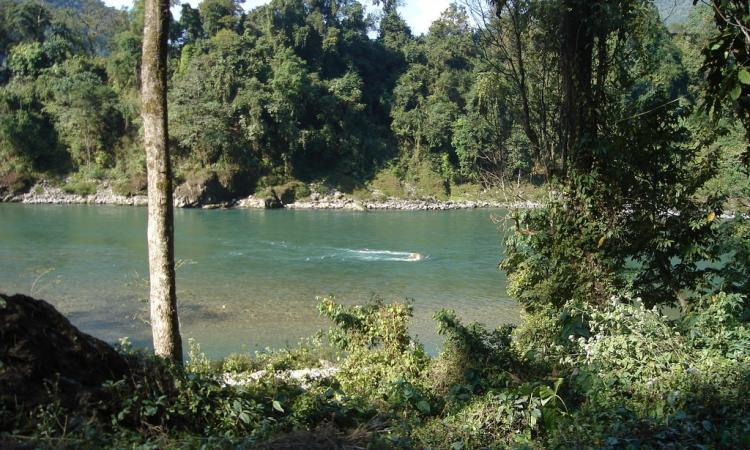
Hydropower development in Bhutan has gained considerable ground as a sector capable of contributing to the development of the country. In 2012, Bhutan earned $177 million through energy export. However, these developmental activities are also prone to natural hazards like landslides since the region lies in a high risk earthquake prone zone and also registers heavy rainfall. These landslides, at times, dam the steep narrow valleys of Bhutan and breach landslide dams that can cause serious hazards downstream.
Such a disaster was witnessed in 2004 when the artificial landslide-dammed Tsatichu lake, formed 30 km upstream of the Kurichu hydel project, burst. Excess water flowed into two tributaries - the Manas and the Beki - of the Brahmaputra. The Kurichu Hydropower Corporation authorities opened the reservoir gates flooding the Barpeta and Nalbari districts of Assam.
According to Aranyak, a Guwahati-based organisation working on environmental issues in Northeast India, a significant amount of landmass and forest cover of the Manas wildlife sanctuary in Assam was washed away following the release of excess water from the Kurichu dam.
The flood caused extensive inundation, widespread devastation to standing crops, homestead, life and property, disruption of road and rail communication, public utilities, water supply installations, irrigation structures and flood control structures. Highways were inundated and bridges collapsed.
Are there proper checks in place?
The Bhutan foreign ministry clarified that the Kurichu Hydropower Project is a run-of the-river scheme which involves the diversion of a river into a tunnel for power production instead of it going into a large reservoir. It was constructed solely for the purpose of generating electricity and not for storing water. While accepting that the landslide dam breakage and consequent flooding of downstream villages in July 2004, the Ministry reiterated that water levels in these dams were normally kept below the full reservoir level to provide some cushion against sudden rise in inflow of water.
The Central Water Commission of India had reported that the 2007 monsoon flood in Assam was caused by excess water in Bhutan's dams but Bhutan’s officials denied it. The managing director of the Druk Green Power Corporation, D. Rinzin, also clarified that in the event of any flushing of the silt and consequent opening of the reservoir gate, prior permission from the Central Water Commission of India is mandatory.
Threat evaluation is need of the hour
The persistent threat of flooding and erosion in the Beki river must be studied and evaluated and possible mitigation strategies must be explored. Vulnerable zones of flood hazard and erosion must be identified to ascertain the need for immediate short term interventions, while also seeking long term permanent solutions to the problem.
The Assam government has implemented both structural and non-structural mitigation measures to provide reasonable flood protection. Permanent measures costing Rs. 23 crore, including cleaning of the river mouths of Manas, Hakua and Beki with mechanical equipment, constructing a boulder dam, closing the breach, as well as anti-erosion measures, were also initiated. The changed course of the Beki river due to landslides at the Indo-Bhutan boundary needs to be restored so that the Manas-Beki combined flow can be reduced. However, such measures can only provide a temporary solution. This incident has also called for a dependable flood forecasting system for Manas, Sankosh, Torsa and Raidak rivers shared by India and Bhutan, monitored by a joint expert team.
Involve and inform people
A joint technical team on flood management between India and Bhutan was formed for this purpose. It held its first meeting in April 2005. Though Bhutan and India are working in close coordination, the threat of another flood persists. The team has met twice and decided on installing deflectors to divert excess water in case of flood in the Manas river.
According to a report of the hazard appraisal committee in Bhutan, the possibility of a renewed blockage of Kurichu is believed to be small because of its relatively high discharge. However, a breach in the newly blocked Wabrachu lake or Tsatichu lake may once again generate such flood waves downstream. It's also essential to hear and comprehend the voices of those directly affected so that necessary action can be initiated to counter negative impacts.
To allay fear of the destructive impacts of dams being built in Bhutan, study teams need to be dispatched to the dam site to gather first hand information so that a correct evaluation can be made about the need for intervention and a dialogue towards finding solutions.
This post was based on a paper submitted for the Sustainable Mountain Development Summit held at Kohima, Nagaland, on September 25-27. The original submission can be downloaded from below.